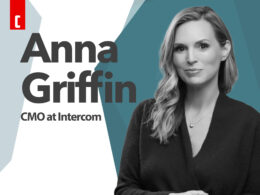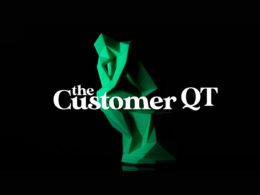It’s that time of year – releasing of the consumer trends for the upcoming year. (It was either that or New Year’s resolutions and “Don’t get COVID” seemed redundant!) Anyway, I googled “trends for 2022” and got 3,760,000,000 in 0.57 seconds. You’ll probably get more if you google that when this this column gets published in early January. So, yeah, a lot of trends.
One reason there are so many trends for 2022 is that they started being announced six or seven months ago. And if history – and google results – are any indication, there’s already a ton of pedestrian stuff out there already past its use-by dates. Most of the time what’s offered up so early in the year before the trends are supposed to make themselves felt turns out to be opinion, not prediction.
There’s a difference. Opinion has efficacy only if you didn’t pay attention to it when it showed up three, four, or ten years ago – when they were nascent values that were going to become trends. So, what’s already out there are marketing clichés, already passé in a marketing and branding world that moves at the speed of the consumer. Technically they’re adjustments that have already made themselves felt in the marketplace.
So not “trends.” Not stuff that’s going to happen. Stuff that’s part of the already-here. Things like “digital marketing will be more important,” “online events will be more popular,” “content will be king,” “D2C marketing will grow,” “investing in your brand will be good,” and “relying on cookies will be bad.” I didn’t make those up. Google them for yourselves. One trend literally advised “brands will use human values as a lens to develop strategies.” Really? Had these people been living in caves and only just woke up from 10-year hibernations? The headline for any of those could be, “Been There, Should Have Done That.”
Brand Keys has been decoding consumer behavior and emotional engagement since 1984. The trends – real dynamics that will change the competitive landscape – are identified annually based on translating behavioral and emotional engagement assessments from our Customer Loyalty Engagement Index (CLEI). And we’re really, really good at it.
That’s not ego speaking. We’re the smartest people around. Well, the smartest people around as long as we have 100,000 + consumers telling us what’s going to happen down the road. Which has allowed us to successfully predict things ahead of the curve. You know. Real consumer trends. Things that are now part of the new-normal – like D2C growth, TikTok, shoppable posts, and shifts from email to social media. Oh, and human values as a lens for brand strategy development. We ID’d that one in 2001. Just saying. When it comes to trends, everything old isn’t new again. Or shouldn’t be. Those are blinding realizations!
Anyway, this year, we did something different. Instead of just relying on the 88,126 consumer interviews for our 2021 CLEI, we used all 25 years of our database – 4.3 million customer loyalty and engagement assessments – to look back and ahead. Assessments that have been independently-validated and, correlate very (very) highly (0.80+) with positive, in-market consumer behavior – so, assessments representing the world’s largest continuous brand tracking database, mined for consumer trends for 2022.
We have four we want to call your attention to:
-
Consumer foundations for brand engagement, product and service purchase, and brand loyalty will be almost entirely emotionally based (80% emotional, 20% rational for 2022 and the foreseeable future).
Rational brand values will get filed by consumers under, “Primacy-of-Product” or “Price-of-Entry.” Brands must acknowledge the difference between “emotion” and “imagery” and “engagement” and “entertainment,” because consumers are going to.
-
Consumer expectations will increase.
Twenty-five years tracking consumer brand loyalty makes it clear consumers will not settle for what exists. Expectations will increase faster than brands keep up (OK, that’s not a new trend, but will continue nonetheless). Expect expectation increases of 38% on average. Higher for tech and social networking. Brands will only manage to keep up by about 5%, creating an even bigger gap between what consumers desire and what brands are seen to deliver.
-
Value ownership will be the lock on brand loyalty and differentiation.
Value-ownership will be a brand-state going beyond simple differentiation and will define category leadership. Brands that want to dominate and “own” categories and consumers will have to also own an emotional value. Like the way Amazon has created a connection fulfilling consumers’ needs for “immediate gratification.” Or Apple via “human connection.”
-
Brand dominance and profitability will be synergistic.
The ability to own emotionally engaging values and best meet consumer expectations will be synergistic. Loyalty will matter more than ever. It will cost 13 to 18 times more to recruit a new customer than to keep an existing one. An increase in loyalty of 5% is projected to result in a boost in lifetime profits per customer of as much as 78%.
But no matter how many consumers anyone speak to, you need to always remember people are only consumers some of the time and, even then do not turn to anything close to resembling a buying equation. They remain people, with emotions, who understand their brand choices have social, tribal, even spiritual consequences. And thus, consumers are constantly re-examining deeply held notions that underlie brand loyalties and market behaviors. Which is why six months in marketplace-time can turn out to be a decade in a brand’s life.
That’s why, examining people from both a rational and emotional perspective always leads us to trends at the nexus of opportunity and success. Oh, and while not a trend, we offer up a fervent wish: Health and happiness for all of you in the coming year.
 Robert Passikoff is founder and CEO of Brand Keys. He has received several awards for market research innovation including the prestigious Gold Ogilvy Award and is the author of 3 marketing and branding books including the best-seller, Predicting Market Success. Robert is also a frequent contributor to TheCustomer.
Robert Passikoff is founder and CEO of Brand Keys. He has received several awards for market research innovation including the prestigious Gold Ogilvy Award and is the author of 3 marketing and branding books including the best-seller, Predicting Market Success. Robert is also a frequent contributor to TheCustomer.
Photo by Justin Luebke on Unsplash.












